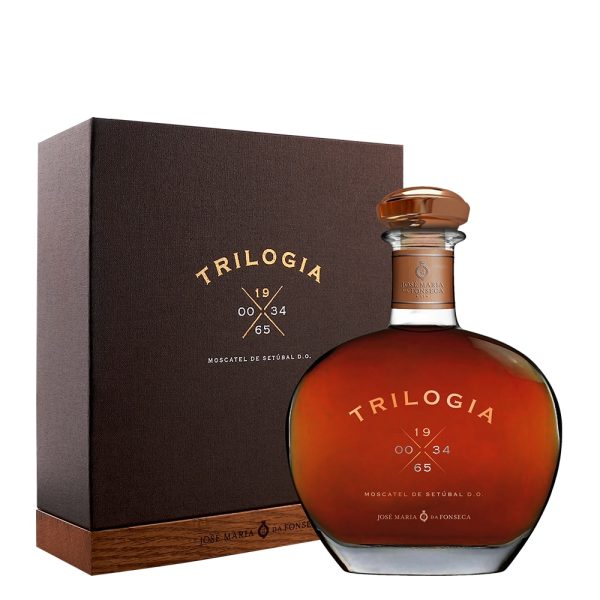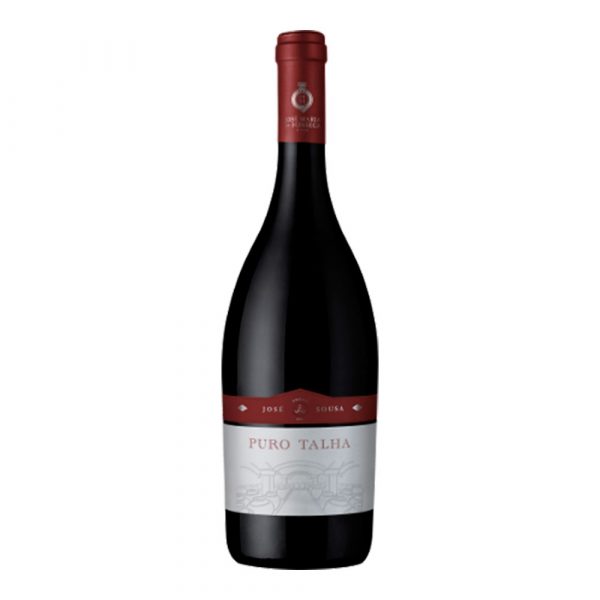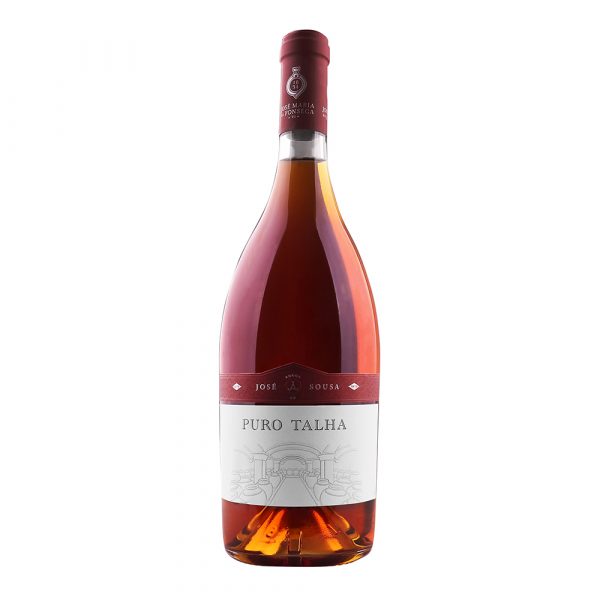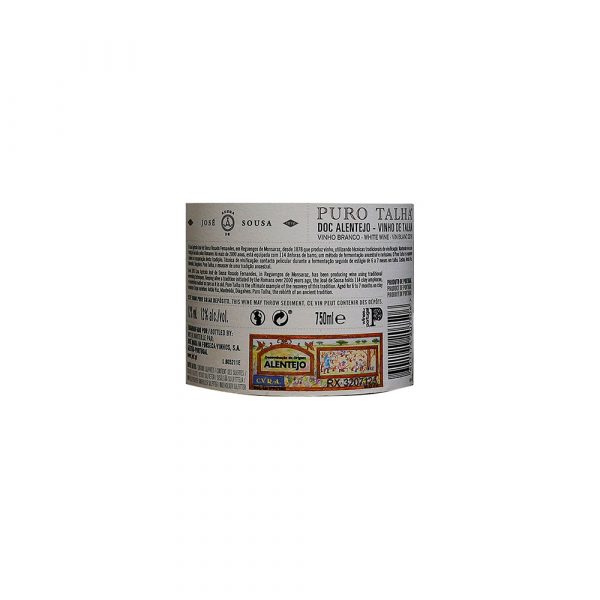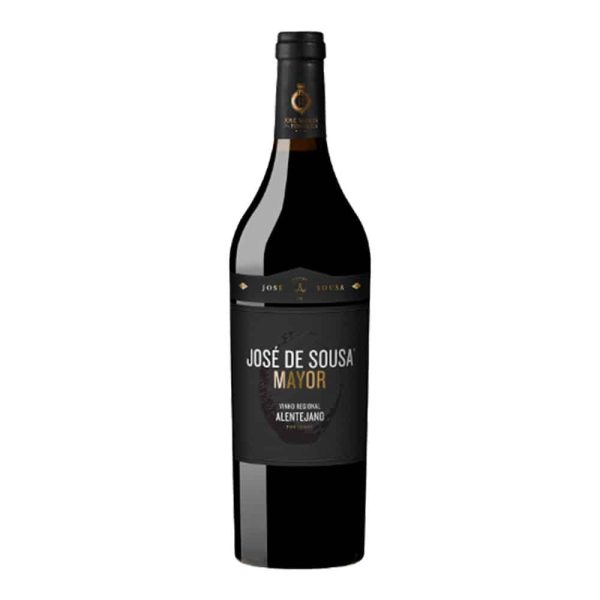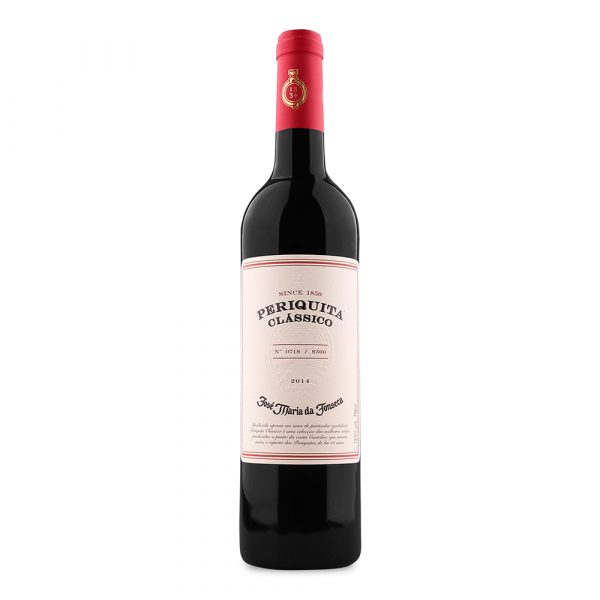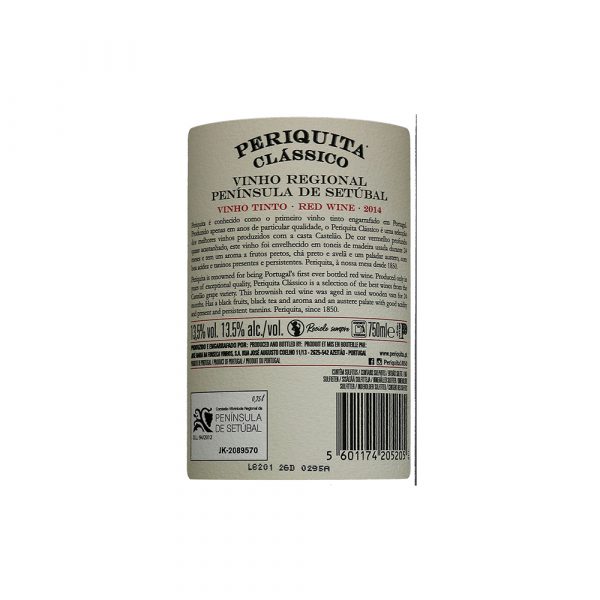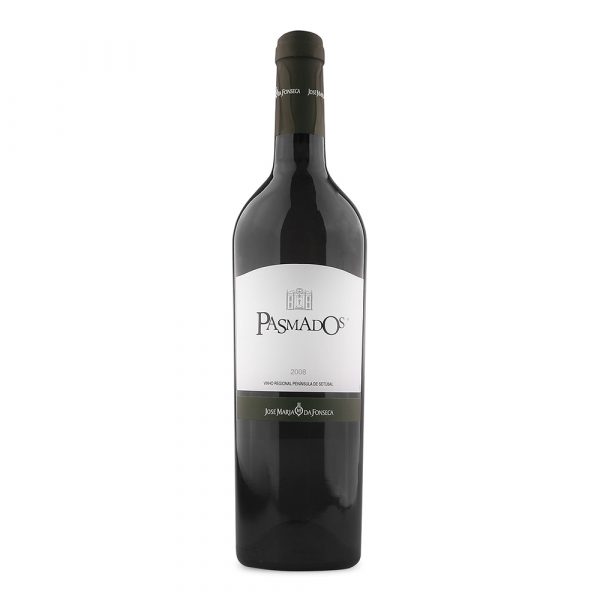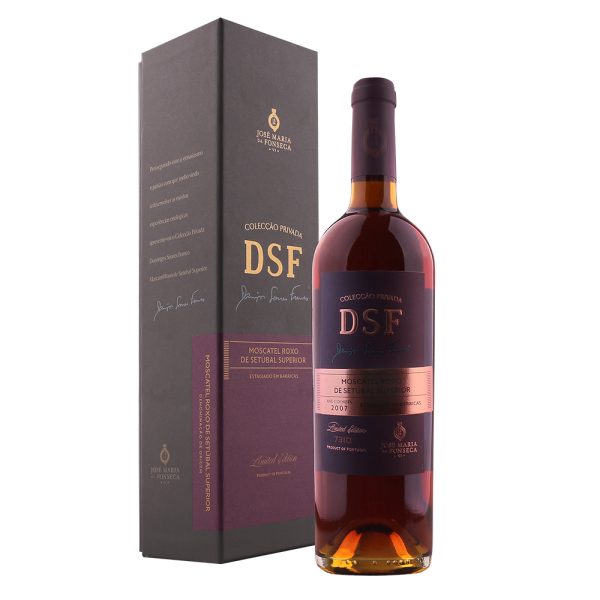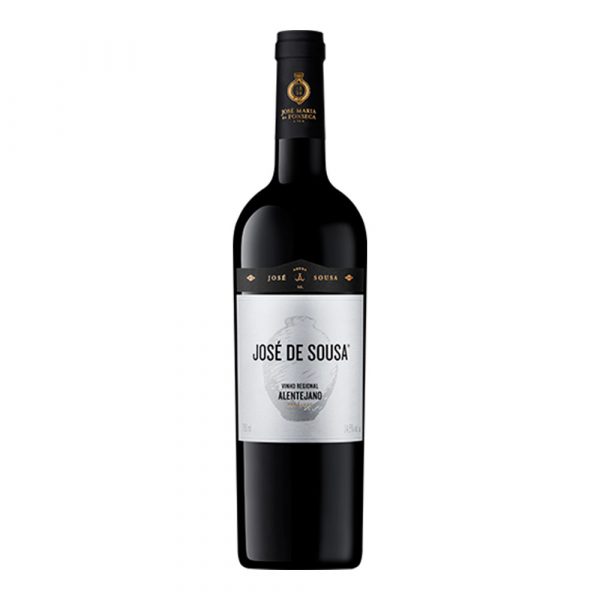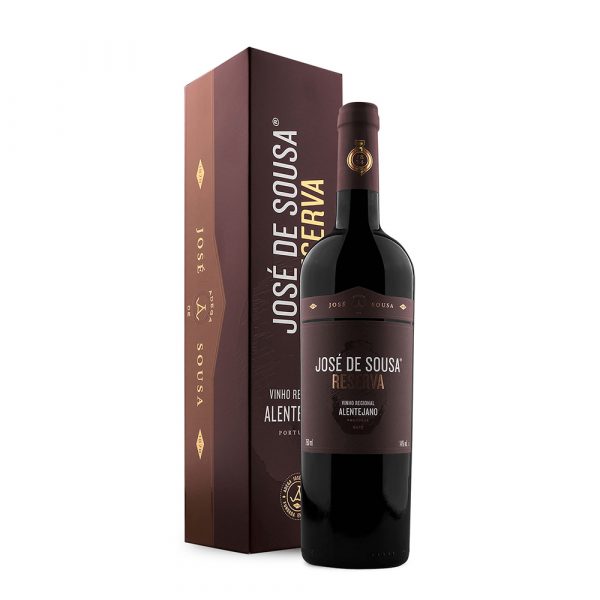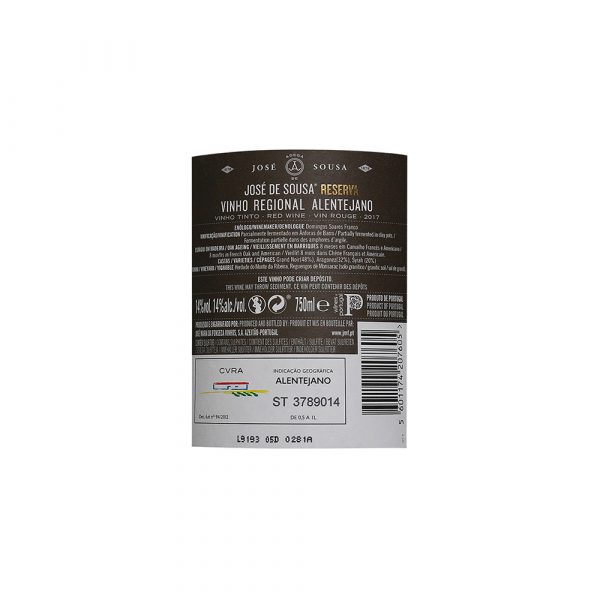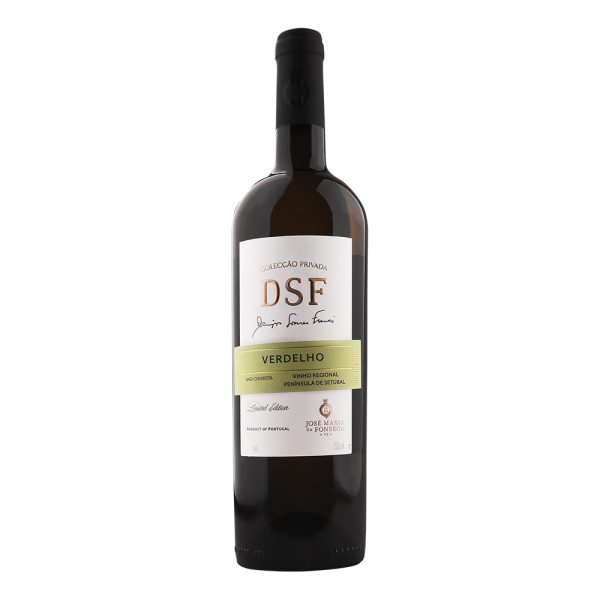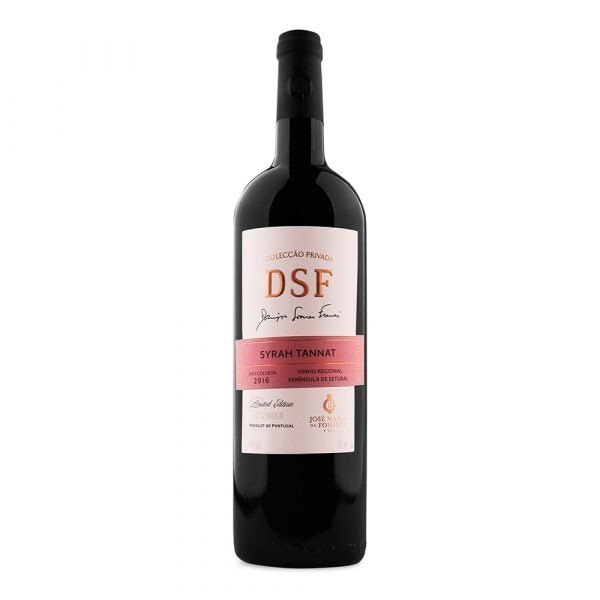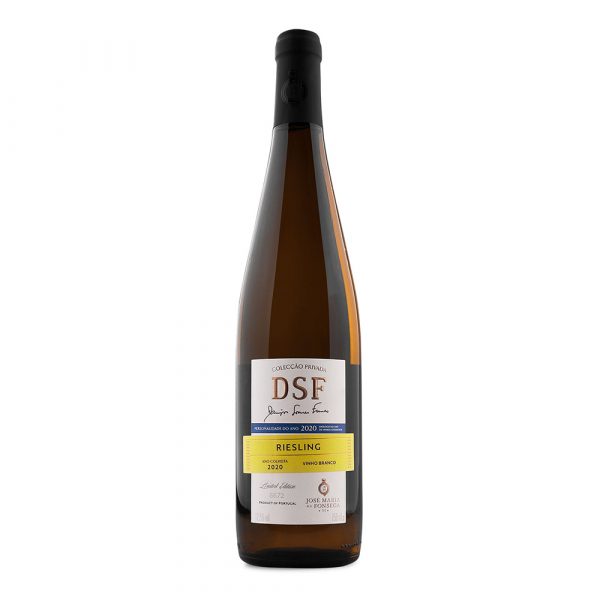Moscatel José Maria da Fonseca Trilogia
To celebrate the new century and the new millennium, Trilogia was created, a rare and special edition, the result of the combination of three great vintages of the 20th century, chosen by winemaker Domingos Soares Franco: 1900, 1934 and 1965. The Trilogia is limited to 13,926 bottles that were filled and placed on the market in October 1999. Enjoy in good company and on a special occasion. Following the tradition started by José Maria da Fonseca in the last century, fermentation is stopped with the addition of brandy. Skin contact lasts 5 months. In March, after the harvest, the masses are pressed and the resulting wine is then blended with the teardrop wine. The crops that make up this wine were aged in used oak barrels. Intense topaz color, complex and intense aroma with notes of dried fruits (almonds, hazelnuts, walnuts and honey). Complex, sweet and very prolonged palate. Perfect combination of aroma and taste, typical of a Setúbal with these characteristics. Contains sulfites.
José de Sousa Puro Talha Red
In the cellar José de Sousa still some ancestor techniques of vinification are used, being the most emblematic the use of the carving in the fermentation of the grapes. The essence of small-scale winemaking has changed in over two thousand years. In this process, the grapes previously crushed on foot are stoned by hand on a ripening table. The fermentation takes place with 30% of the stalks, in hoists with an average capacity of 1,600 liters at a temperature that is around 28ºC, being controlled by watering the hoists 4 times a day. The fermentation takes approximately 8 days, leaving the wine in maceration after fermentation until November. After the pressing of the masses, part is staged in hoists for a period of around 16 months in which an olive oil film is used to prevent oxidation. The other part was stamped on 500-liter brown casks. At the same time, the rest of the stall was fermented in a "task" (small carving with capacity of 300 liters) with a little must. This product is called ripening wine because it is the result of this ancestral technique of manual destemming. This wine is used in the final lot as "salt and pepper". Color reddish brown, aroma of nuts, spices (black pepper, cloves), clay, liqueur, evolved but not oxidized. Taste robust, dry, good acidity, very balanced, tannins present but soft. Long and persistent end of test. Contains Sulfites.
José de Sousa Puro Talha White
At the José de Sousa winery, some ancestral winemaking techniques are still used, the most emblematic being the use of the mulch in the fermentation of the grapes. The essence of woodcarving winemaking has changed little in more than two thousand years. In this process, the white grapes are slightly crushed by foot and manually destemmed on a ripanço table. Fermentation takes place, without stems, in pots with an average capacity of 1,600 liters at a temperature of around 28ºC, being controlled by watering the pots 4 times a day. Fermentation takes approximately 8 days, leaving the wine in contact with the masses. Aged in amphorae for a period of 4 to 10 months, depending on the vintage. During this period, a film of oil is placed to prevent oxidation. Amber color, aroma of dried fruits, especially hazelnut. Spices, evolved, white pepper, ripe kiwi, bread, liqueur, hay. Elegant, complex palate, good acidity with a dry finish. Long and persistent finish. Contains sulfites.
José de Sousa Mayor Red
In the cellar José de Sousa, some ancestral techniques of vinification are still not used, the most emblematic being the use of the carving in the fermentation of the grapes. The essentials of small-scale winemaking have changed in recent centuries. In this process, the grapes previously stamped on foot are stripped by hand on a table called a "ripening table". Then, part of the must, the films and 30% of the stench are fermented in the clay hoards. The rest is fermented in mills. The use of cutlery confers spices and a third dimension to wine. After fermentation, the wine has a skin maceration of 4 weeks, followed by 9 months of aging in new French oak wood. It has a red color with brownish highlights. Aroma to dates, green tea, dried figs, a little peppermint, well integrated oak wood. Fruity palate, soft, elegant, soft tannins. Long test field.
Contains Sulfites.
Periquita Clássico 2014 Red
Vinification in tanning at 28ºC with stalks. Aging 24 months in used wooden barrels. Red color with brownish tones, leather aromas, black fruits, black tea, violets and hazelnut. Austere taste, good acidity, presence of tannins, persistence present following the same concept as the old Periquita. Contains sulfites.
Pasmados White
Fermentation at 18ºC. Aging for 3 months in 2nd year French oak barrels with bâtonnage, resting in our cellars the rest of the time. Straw yellow color, aroma of dried fruits (nuts, hazelnuts), very ripe pineapple, melon, harmonious, elegant, great evolution. Fruit present, some oak, good acidity, complexity. Long finish. Contains sulfites.
Moscatel DSF Coleção Privada Superior Roxo
Fermentation is stopped with brandy, leaving the films to soak. Aging in used wooden casks. No bottle aging as it does not evolve after bottling. Amber color with reddish tinges, aroma of almond and roasted hazelnuts, coffee and honey. Very complex in line with the nose aroma with notes of caramelized hazelnut and roasted almond, toasted bread, raisins of black figs and coffee. Very long finish. Contains sulfites.
José de Sousa Red
In the cellar José de Sousa still some ancestor techniques of vinification are used, being the most emblematic the use of the carving in the fermentation of the grapes. The essentials of small-scale winemaking have changed in recent centuries. In this wine, a small part is made according to this Roman process, the red grapes previously trodden on foot and destemmed by hand on a table called "table of ripanço". Afterwards, a small part of the must, the films and the stench are fermented in the clay pots, and another in the wine press. The remainder of the brand is fermented in stainless steel vats. The use of cutlery confers spices and a third dimension to wine. After fermentation, the wine has a skin maceration of 4 weeks, followed by 9 months in French and American oak casks. Red color loaded with scented dates, hay, plums, toasted bread, a little clove, oak wood, vanilla, chocolate. Palate with good fruit, good acidity, tannins present but soft. Long end of test. Contains Sulfites.
José de Sousa Reserva Red
DSF Private Collection Verdelho White
Must fermented in stainless steel at 16ºC. It has a yellow citrus color, subtle aromas of honeysuckle, very characteristic of this variety. In the mouth, in tune with the aroma of the nose, honeysuckle and lantana. Present and persistent freshness. Fresh finish, consistent with the nose aroma, lantana flavor and white pepper. Contains sulfites.
DSF Coleção Privada Syrah Tannat Red
The grapes were fermented in a stainless steel mill at a temperature of 28º C for 10 days, being bottled after 8 months without being filtered or stabilized by the cold. No use of wood. Dark color, aroma of blueberries, violets, chocolate, dried dates, red cherry. Very fruity, smoky, balanced taste, good acidity, tannins present (due to Tannat) but smooth. Long end of test. Contains sulfites.
DSF Private Collection Riesling White
Fermentation in stainless steel vats at 14ºC. Lemon yellow color with greenish tones. Floral aroma, lime, lemon and a finish with a touch of green pear. Very smooth mineral texture with very balanced acidity that gives it freshness and a very pleasant and persistent aftertaste. Medium/long race final. Contains sulfites.

